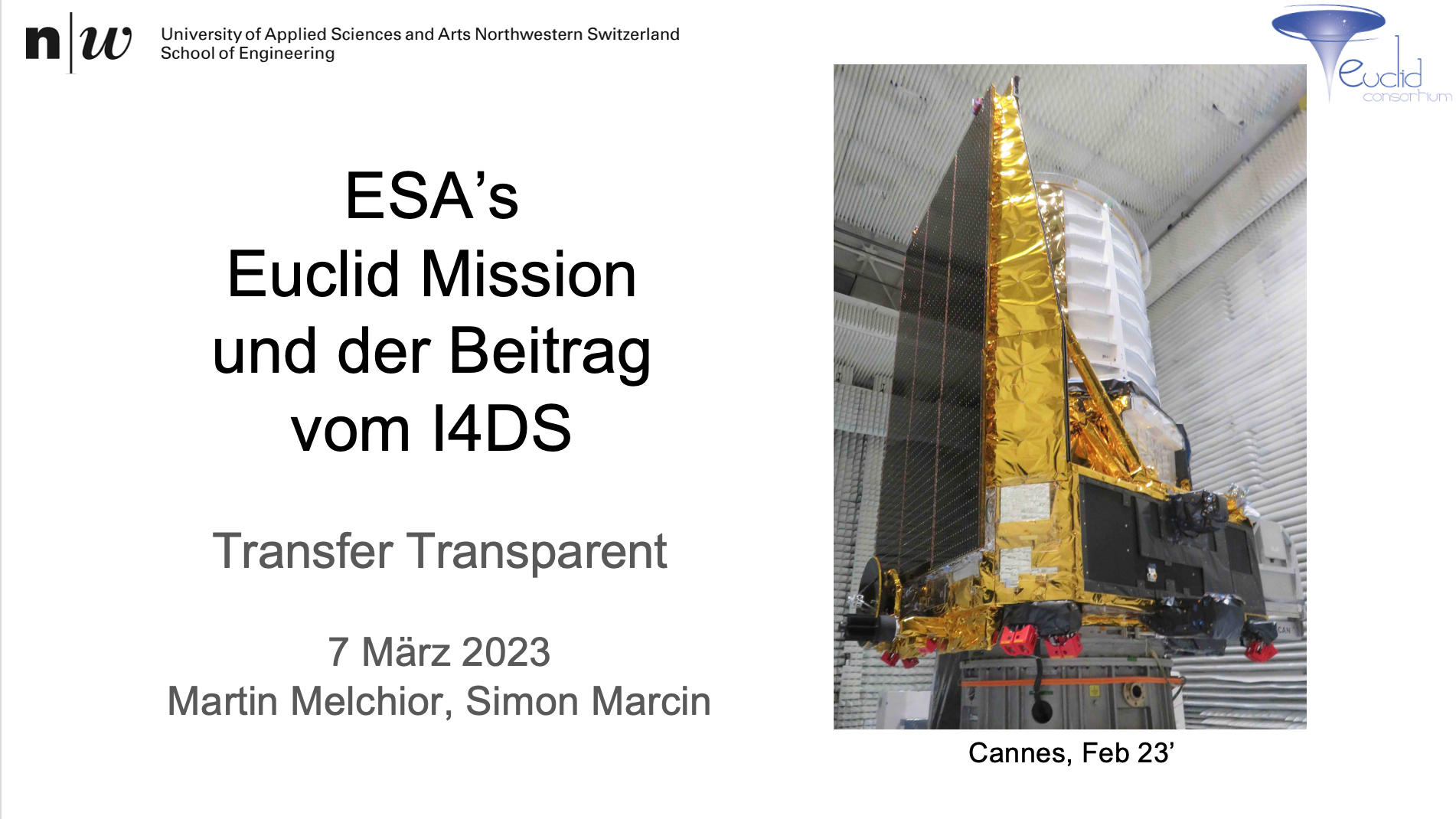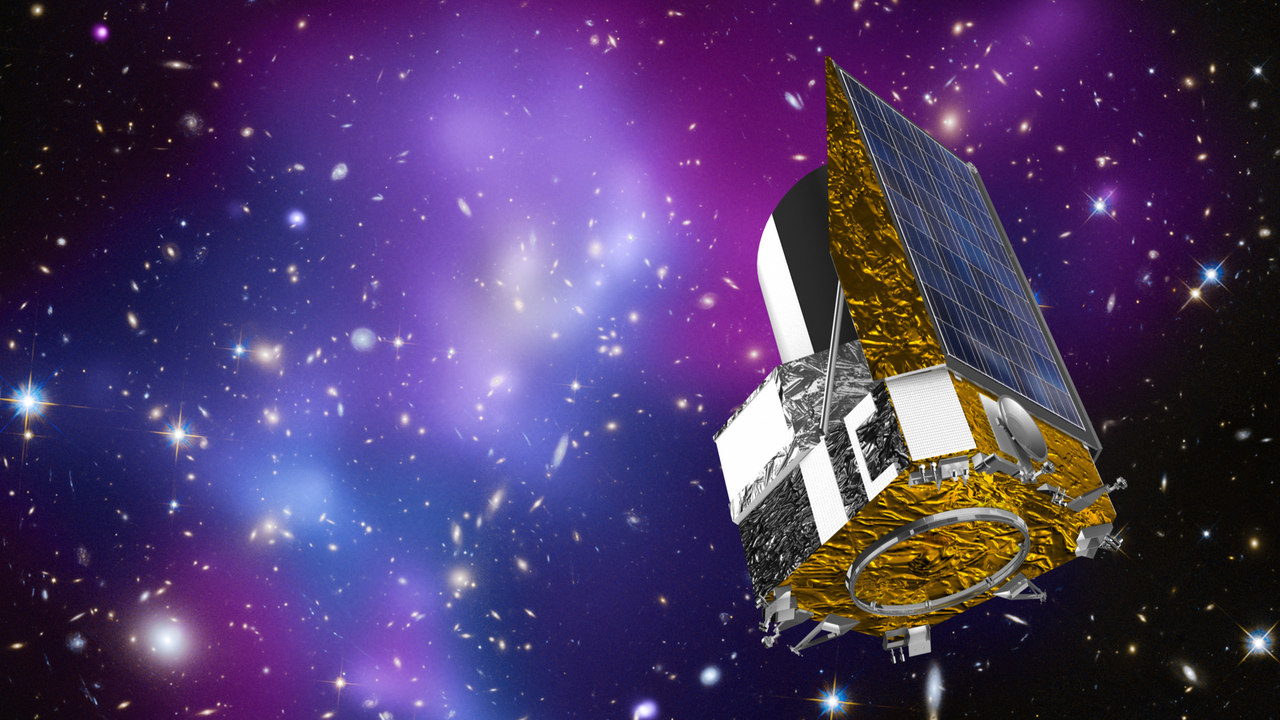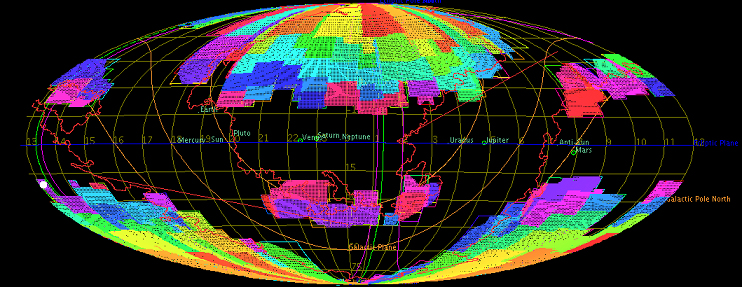Euclid
Space telescope for measuring the acceleration of the Universe to better understand dark energy and dark matter
ROLE OF THE INSTITUTE FOR DATA SCIENCE
> Data management, distribution of processing, workflow management and scheduling
> Efficient algorithms and Applied Machine Learning
Project lead at I4DS: Martin Melchior
Partners: : International consortium consisting of many academic institutions and industry partners
Funding: ESA/Prodex, SNF Sinergia
Start: 2012
Status: ongoing
Launch: July 2023
Keywords: big data, data management, applied machine learning, cosmology, dark energy, dark matter, Euclid
SUMMARY
Euclid is a space telescope for observing the acceleration of the Universe to better understand dark energy and dark matter. Data will be collected in the darkest area of the sky, free of contamination by light from our Galaxy and our Solar System. Euclid will observe about ten billions of light sources. The complete survey represents hundreds of thousands of images and several tens of Petabytes of data. The big data challenge will consist of efficiently managing and processing the vast amount of data in a distributed ground segment architecture with ten data centres distributed around the world. Furthermore, machine learning techniques play an important role to automatically extract relevant information from the image data for the scientific analysis.
PEOPLE @I4DS WHO WORK ON EUCLID
Pascal Herzog
Master Student
Tino Heuberger
Bachelor Student
Dr. Stefan Hackstein
Astrophysicist
Simon Marcin
Software engineer
PEOPLE @FHNW WHO WORKED ON EUCLID BEFORE
- Marco Soldati, until 2022
- Marcel Burri, until 2022
- Dr. Christian Bailer, until 2021
- Dr. Mohammad Dia, until 2020
- Cyril Halmo, until 2017
- Stefan Müller, until 2012
STUDENT PARTICIPATION
OPEN RESOURCES AND RESULTS
VISUALS AND AUDIO
An artist’s view of the Euclid spacecraft. Credit: ESA/C. Carreau
Euclid in a nutshell. Credit: ESA/C. Carreau

This is how much of the sky Euclid is expected to see at once. The entire survey will cover 140 times this area. Credit: ESA/Euclid consortium
During the planned six years of mission operation, Euclid will observe these regions of the sky, looking for dark matter and investigating the expansion of the universe. Credit: ESA/Euclid consortium
First images, November 7th, 2023. Credit: ESA
Euclid in a minute by Martin Melchior
Euclid in a minute by Stefan Hackstein
Euclid/FHNW media coverage
selected articles
2023, November – first images
2023, 1.-6. July – launch



